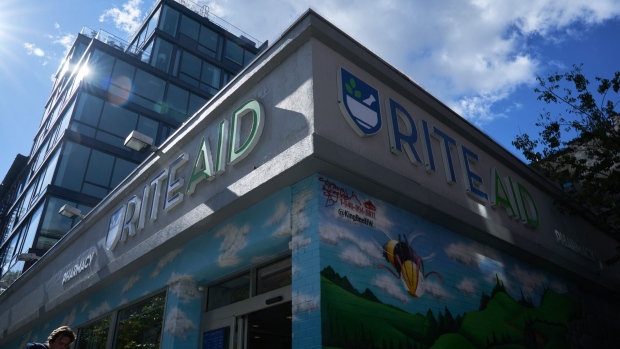Jun 28, 2024
Rite Aid Averts Total Closure, Wins Restructuring Plan Approval
, Bloomberg News

(Bloomberg) -- Rite Aid Corp. has been cleared to exit bankruptcy after winning court approval on a restructuring plan that’s poised to save the ailing pharmacy chain from liquidation by handing control of the business to key creditors.
Judge Michael Kaplan said Friday he’d approve a restructuring deal that cuts about $2 billion in debt and gives the pharmacy access to about $2.5 billion in exit financing to fund a turnaround plan its advisers have dubbed “Rite Aid 2.0.”
The deal also includes a series of settlements resolving investigations by federal authorities and more than 1,000 civil lawsuits related to opioid prescriptions. Rite Aid has said the settlements and broader restructuring plan keeps open critical neighborhood pharmacies and will save thousands of jobs.
The legal settlement covers Rite Aid as well as potential claims against its lenders, which are not in Chapter 11. Rite Aid lawyer Aparna Yenamandra said during a hearing in New Jersey bankruptcy court that the deal will only settle legal claims for creditors who agree to the settlement.
The pharmacy planned to obtain this type of consent before the Supreme Court ruled Thursday that bankruptcy law doesn’t permit certain types of non-consensual deals, Yenamandra said.
Judge Kaplan said he’d approve the restructuring after denying a handful of legal objections and after Rite Aid resolved disputes involving its insurers. Lawyers said they need to hammer-out language that will be used in the court order before it’s submitted to the court.
The restructuring plan is also subject to customary closing conditions. Although Rite Aid and its financiers anticipate the deal will be executed as planned, creditor lawyers said Friday the deal remains fragile and that costs associated with an unexpected delay could hinder the restructuring.
Challenging Deal
Rite Aid, which filed Chapter 11 in October, won approval of the restructuring plan after navigating a series of challenges that threatened to close the business. The pharmacy chain has closed more than 520 locations in bankruptcy, roughly a quarter of the 2,111 stores Rite Aid operated when it sought court protection.
As Rite Aid pushed its restructuring forward, some creditors asked bankruptcy advisers to cut their professional fees amid liquidity concerns. Creditors also criticized a $20 million “success fee” baked into Rite Aid Chief Executive Officer Jeffrey Stein’s compensation plan.
Rite Aid also recently risked being saddled with more than $200 million in extra costs tied to the recent acquisition of its pharmacy benefit manager Elixir by MedImpact Healthcare Systems Inc. Judge Kaplan ruled Monday that MedImpact is responsible for the disputed costs, sparing the pharmacy chain from the liabilities.
Despite the challenges, Rite Aid succeeded in striking key agreements to keep the business afloat and move the restructuring forward. Rite Aid has agreed to provide unsecured creditors, a group that includes opioid victims, $20 million when the business exits Chapter 11 and $27.5 million in deferred cash payments.
These creditors will also get 10% of Rite Aid’s equity and rights to future litigation, according to court documents. Before the settlement, opioid victims had been at risk of receiving no compensation from Rite Aid, lawyers have said.
Tens of thousands of opioid victims will get between $250 and $500 each, said Arik Preis, a lawyer representing individuals with legal claims against Rite Aid. The result for opioid victims is “pretty awful but it could have been worse” given the challenges involved in the bankruptcy, Preis said.
The case is Rite Aid Corp., 23-18993, US Bankruptcy Court for the District of New Jersey.
--With assistance from Maria Clara Cobo.
©2024 Bloomberg L.P.






